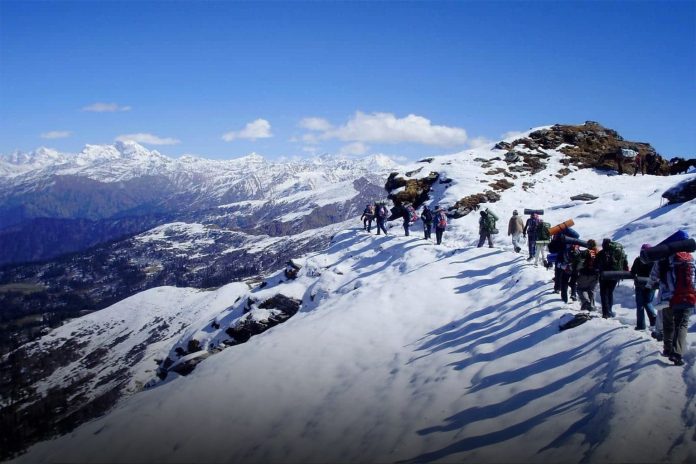If you are here on this page, you will know much about the Kedarkantha Trek. This blog is more of a ready reckoner to put everything in perspective. Again, for the uninitiated, the Kedarkantha trek is a captivating winter trek that has been mesmerizing trekkers worldwide with its enchanting beauty and snow-capped wonders. Situated at an elevation of 3800m, the trek can be undertaken by beginners and seasoned trekkers alike. The flora here is diverse, with the forests full of oak, pine, and rhododendrons. The wildlife includes Himalayan monals, musk deer, and sometimes even elusive snow leopards. Though the Kedarkantha Trek is not technically challenging, it demands moderate fitness to conquer the occasional steep ascents and descents. However, the reward for the effort is the breathtaking 360-degree panoramic view of majestic peaks like Swargarohini, Black Peak, and Bandarpoonch from the summit.
Having said that, here are ten expert tips on what to expect during the Kedarkantha Trek so that your trek becomes a memorable one sans any concerns:
Braving the Snowy Landscapes:
Kedarkantha is a trek known for its snowy landscapes and beautiful snow-clad peak views. Now, we all know that it snows in winter when temperatures are extremely low. Most of us do not experience this weather in our usual lives, so it is always a good idea to be adequately prepared for the season. The preparations aren’t also much, to speak. Ensure you have enough warm and comfortable clothes, dedicated innerwear, insulation and waterproof jackets, and waterproof pants. Ensure you have enough woolen socks, gloves, and a warm beanie or hat. A balaclava or neck gaiter will also be a good thing to keep. Next comes stuff like a good quality cold-rated sleeping bag, a headlamp, spare batteries, and a hot water bag.
Next, and probably one of the most important aspects, is your physical fitness. Make sure you do enough cardiovascular exercises and stamina-building activities so that you may train to cope with the trek’s physical demands
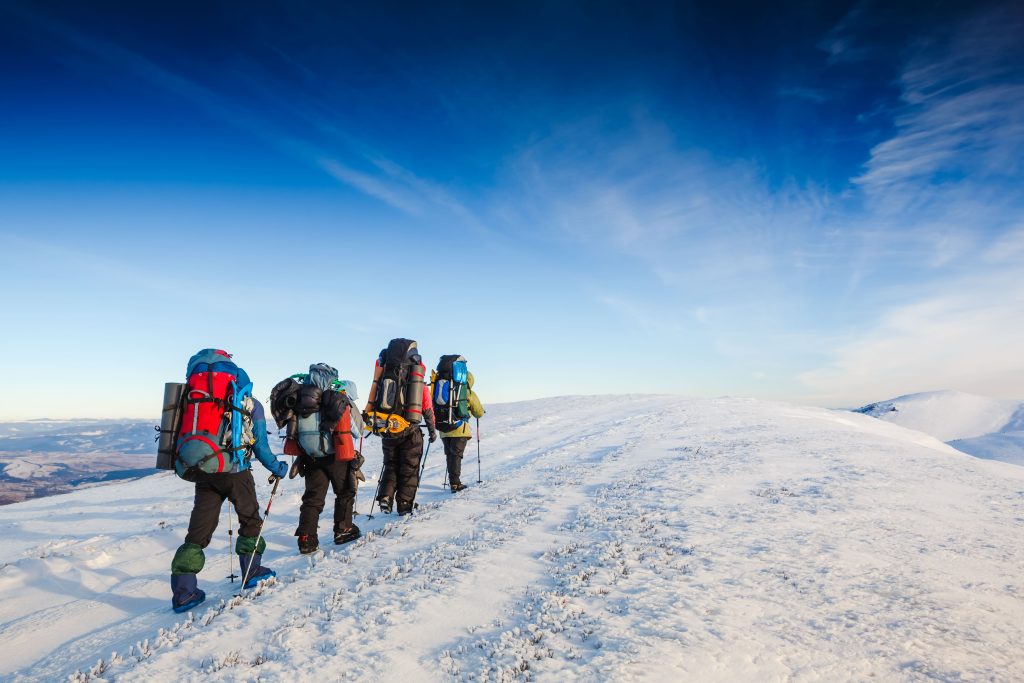
Getting Ready for Camping in Cold Conditions:
Nights on the trek are freezing; hence, you need to be well prepared. We mentioned the sleeping bag and other clothing stuff; let us prepare you mentally for the temperatures you will have to face. The nights on the Kedarkantha Trek are the coldest, with temperatures often plummeting below freezing. In lower altitudes and at campsites, nighttime temperatures can range from -5°C to -10°C (23°F to 14°F). At higher altitudes or during colder nights, temperatures can dip even lower, reaching as low as -15°C to -20°C (-5°F to -4°F) or even lower.
When it comes to keeping the cold away, we at TrekNomads ensure that the campsite is selected wisely to avoid exposure to strong winds or avalanches. The tents are also dome or alpine-shaped to withstand cold weather and provide shelter from the wind and snow.
In some cases, campfires may also be done to provide warmth and comfort.
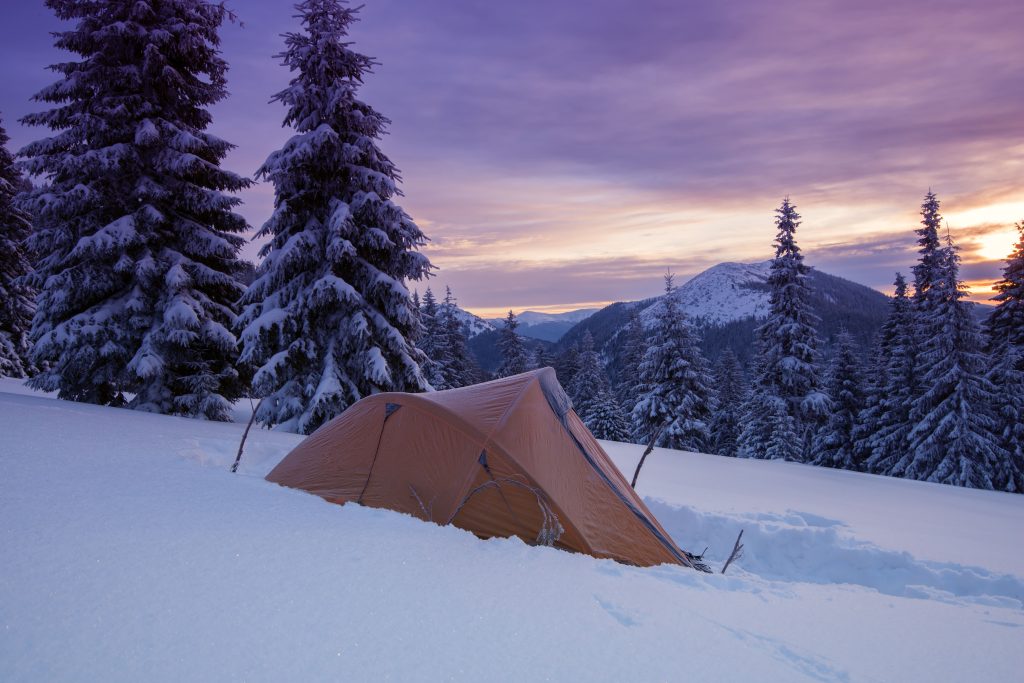
Managing the Difficulty level
Only a little goes into managing the difficulty levels if you are prepared in advance and well. The Kedarkantha trek is a moderate-difficult trek and suitable for beginners as well. Some sections may involve steep ascents and descents, requiring good physical fitness, but that is about it. Also, the snow-covered uneven terrain can be physically demanding, so it is best to be prepared for it. The trek involves approximately 4-6 hours of walking which can be tiring for those with little trekking experience or inadequate fitness levels.
The straightforward things that can help manage this include:
- Engage in regular physical exercise and endurance training to build stamina and strength before the trek. Cardiovascular activities like running or cycling or swimming can improve your overall fitness.
- Arrive in Sankri or any other starting point a day or two before the trek to acclimatize to the higher altitude. Take it easy on the first day and avoid strenuous activities.
- Dress in layers to adapt to changing weather conditions. Remove or add layers to regulate body temperature and stay comfortable during the trek.
- Drink plenty of water to stay hydrated, even in cold weather. Consume nutritious meals and snacks to maintain energy levels during the trek.
- Trekking poles can provide stability on uneven terrain and help reduce the impact on your knees and joints. They are particularly useful during steep ascents and descents.
Gearing up for the Sunrise
First, whenever you trek, you are usually so tired that you sleep early, and then the mornings are so bright that you will wake up early. But how about seeing the sunrise too? The beauty of the sunrise on this trek lies in its panoramic views, with a 360-degree vista of snow-capped mountains glowing in hues of pink, orange, and gold as the first rays of sunlight touch their summits. During the winter (December to February), when the trek is most popular, sunrise typically occurs between 6:30 AM and 7:00 AM. However, it’s important to note that sunrise times can change throughout the trekking season, so it’s best to confirm the exact time with your trek leader or guide.
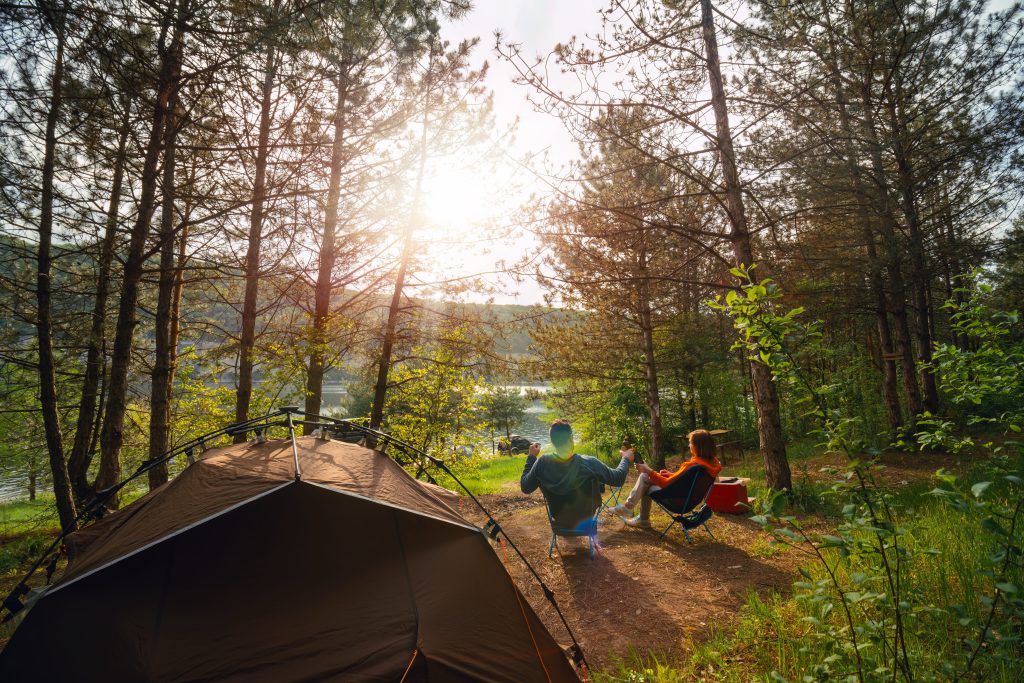
One of the trek’s highlights is witnessing the breathtaking sunrise from the Kedarkantha Summit. Start early to reach the summit before sunrise and enjoy the mesmerizing views.
The sunrise on the Kedarkantha Trek is a truly mesmerizing and unforgettable experience. As trekkers go to the Kedarkantha Summit, they are rewarded with one of nature’s most spectacular shows—the sunrise over the majestic Himalayan peaks.
The usual time for sunrise on the Kedarkantha Trek varies depending on the time of the year and weather conditions. To ensure you wake up in time to witness the breathtaking sunrise, follow these tips:
- Set an Early Alarm: Before bed, set an early alarm on your watch or phone. Ensure the alarm has a loud and persistent tone to wake you up even on a chilly morning.
- Keep Warm: Nights on the Kedarkantha Trek can be freezing, so ensure you have sufficient warm layers and a comfortable sleeping bag to keep you warm through the night. Being comfortable will help you wake up more quickly.
- Sleep Early: Try to get a good night’s sleep and retire to your tent early. Avoid staying up too late, as exhaustion may make waking up for sunrise difficult.
- Stay Hydrated: Drink some water before sleeping to stay hydrated. Dehydration can make it harder to wake up early in the morning.
- Share the Excitement: Inform your trek mates and group members about the plan to witness the sunrise. The excitement and camaraderie will motivate everyone to wake up early and experience the magical sunrise together.
- Ask for a Wake-Up Call: If you’re concerned about waking up on time, you can request a wake-up call from your trek leader or the support staff.
Proper Acclimatization:
Proper acclimatization is crucial for any trek that involves a significant change in altitude, and the Kedarkantha Trek is no exception. It helps prevent altitude-related issues like Acute Mountain Sickness (AMS), which can be potentially dangerous and even life-threatening if not taken seriously.
Here’s why acclimatization is essential for the Kedarkantha Trek and how you can ensure proper acclimatization:
- Altitude Gain: The Kedarkantha Trek starts from Sankri at around 2,000mabove sea level. As you ascend to higher altitudes, reaching up to approximately 3,800m at the Kedarkantha Summit, there is a significant gain in altitude over a short period. Such rapid altitude gain can lead to AMS if your body doesn’t have time to adjust.
- Symptoms of AMS: AMS can manifest symptoms like headaches, dizziness, nausea, loss of appetite, and fatigue. In severe cases, it can progress to High Altitude Pulmonary Edema (HAPE) or High Altitude Cerebral Edema (HACE), both of which are medical emergencies.
- Acclimatization Schedule: To ensure proper acclimatization, spending at least a day in Sankri or another lower-altitude location is recommended before starting the trek. During this rest day, gradually engage in light activities, like short walks, to help your body acclimate to the higher elevation.
- Hydration: Staying well-hydrated is essential for acclimatization. Drink plenty of water throughout the trek to keep your body hydrated in the dry and cold mountain environment.
- Ascend Gradually: Follow a gradual ascent profile during the trek, allowing your body enough time to adjust to the altitude. Ascending too rapidly increases the risk of AMS.
- Listen to Your Body: How your body reacts to the altitude. If you experience any symptoms of AMS, inform your trek leader or guide immediately. Descending to a lower altitude is the most effective treatment for AMS.
- Medical Considerations: If you have a history of altitude-related issues or certain medical conditions, consult a doctor before undertaking the trek. Some individuals may require medications like acetazolamide (Diamox) to aid in acclimatization. (If an only if there are any AMS symptoms)
- Fitness Level: Being in good physical shape can aid in acclimatization. Engage in regular exercise and build your stamina before embarking on the trek.
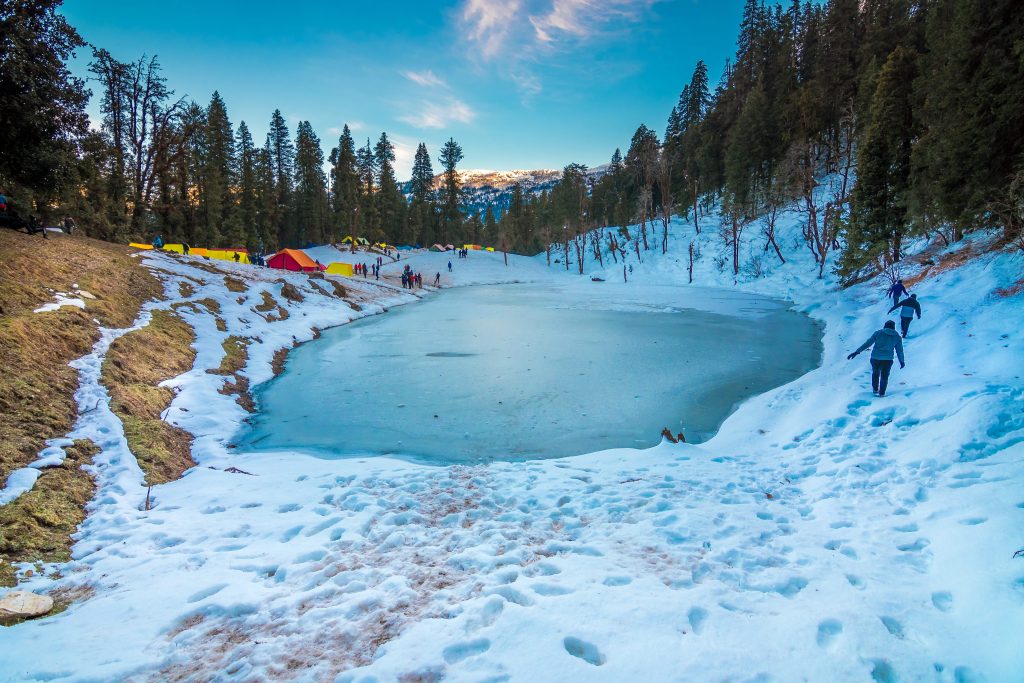
Choosing the best Travel Operator that is there
We don’t even have to say this, but going with an experienced operator like TrekNomads does make all the difference. At TrekNomads, we provide knowledgeable guides, trek leaders, and support staff, making your trek safer and more enjoyable.
Here’s how TrekNomads makes your trek safer and more enjoyable:
- Expert Guidance: TrekNomads provides knowledgeable guides and trek leaders who are well-versed in the Kedarkantha region. We have extensive experience leading treks and are familiar with the terrain, weather conditions, and potential challenges.
- Safety Priority: Safety is the top priority for us at TrekNomads. Our trek leaders and support staff are trained in first aid and emergency procedures, ensuring that you are in capable hands during any unforeseen circumstances.
- Logistical Support: We at TrekNomads take care of all the trek logistics, including permits, transportation, accommodation, and meals. This allows you to focus solely on the trekking experience without worrying about the nitty-gritty details.
- Trek Support Staff: TrekNomads’ support staff includes cooks, porters, and helpers who take care of setting up campsites, preparing meals, and carrying heavy equipment. Their assistance lightens your load, allowing you to enjoy the trek with less physical strain.
- Environmental Consciousness: TrekNomads emphasizes responsible trekking practices to minimize the environmental impact. We follow the principles of Leave No Trace and encourage trekkers to respect and preserve the natural beauty of the Himalayas.
- Emergency Support: TrekNomads has established communication systems and protocols to ensure swift assistance and evacuation in emergencies or unforeseen situations.
Ensure Adequate Hydration
During the Kedarkantha Trek, water sources can become limited, particularly during the winter months when everything is frozen. The freezing temperatures can turn water sources into ice, making it challenging to access and utilize them for drinking. In such conditions, carrying sufficient water or using a thermos to keep liquids from freezing is of great help and ensures you stay hydrated throughout the trek.
PS: If you come across a water source but are unsure of its safety, use water purification methods like boiling, using water purification tablets, or using a portable water filter to make it safe for consumption. We have a dedicated blog for the same, which you can refer to.
Resting and Sleeping Peacefully
To make your stay during the Kedarkantha Trek comfier, TrekNomads provides basic but comfortable accommodations. Here are five steps you can take to further add to it.
- Carry a Sleeping Pad: While the provided tents and sleeping bags by TrekNomads are designed to keep you warm and comfortable, carrying an additional sleeping pad can add an extra layer of comfort. It provides insulation from the cold ground and offers more cushioning for a better night’s sleep.
- Pack a Pillow: If you prefer sleeping with a pillow, consider carrying an inflatable or compressible camping pillow. It will support your head and neck, ensuring a more restful sleep at the campsites.
- Personal Hygiene Kit: Bring a personal hygiene kit containing toiletries like wet wipes, hand sanitizer, and a small towel. These items will help you freshen up and feel cleaner during the trek, enhancing your comfort.
- Portable Seat Cushion: You might sit on rocks or uneven ground during breaks and mealtimes. A portable seat cushion or lightweight foldable chair can provide extra comfort and support for your back and posture.
Remember, while these steps can make your stay comfier, it’s essential to pack smart and keep your backpack lightweight. The Kedarkantha Trek requires trekking for several days, so prioritize carrying essential items and avoid overpacking.
The Support System
Porters and mules play a crucial role in supporting treks like Kedarkantha by carrying the necessary equipment, supplies, and personal belongings of trekkers. These trekking assistants not only ease the burden on the trekkers but also contribute to the local economy by employing the region’s people.
Treks like Kedarkantha involve walking for several days with varying terrains and altitudes. Carrying heavy backpacks can be physically demanding, especially for trekkers who need more experience. Porters and mules lighten the load, allowing trekkers to focus on enjoying the trek and the beautiful landscapes. Ensure your belongings, including personal gear and equipment, fit within the prescribed limits to prevent overloading.
Respecting what matters
You are coming to trek for a reason, and it isn’t just that you love trekking. Take the example of the garbage hills in Rabale and other surrounding areas; they are huge, but you wouldn’t want to trek on them, right? You need to breathe clean air and soak up the beauty too!
The point we are making here is that you must be conscious of your surroundings and ensure you do not litter. Follow Leave No Trace’s principles to minimize your environmental impact. Pack all your trash, including wrappers, tissues, and food waste. Dispose of waste properly at designated waste collection points.
Use Biodegradable Products: Use biodegradable toiletries and soaps to minimize pollution of water sources. Use water judiciously and avoid wastage. Turn off taps when not in use and carry reusable water bottles to minimize plastic waste. Keep noise levels low to maintain the tranquility of the surroundings and avoid disturbing wildlife. If you find any litter or non-biodegradable waste during the trek, pick it up and carry it back to proper disposal points.
By being responsible trekkers, we can ensure that pristine places like the Kedarkantha Trek remain unspoiled and continue to be enjoyed by generations.
So, folks, that was it from our side, the ten very important points to remember when taking up the Kedarkantha Trek. Hoping this helped. Please keep sharing more, and if you feel like booking the trek now, here is the link for you!
